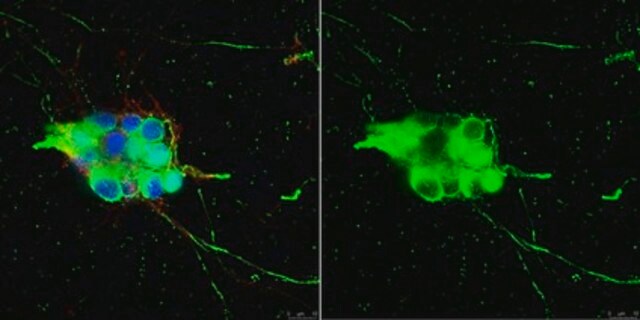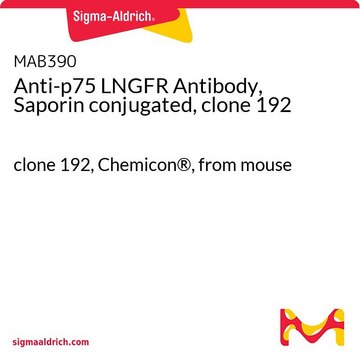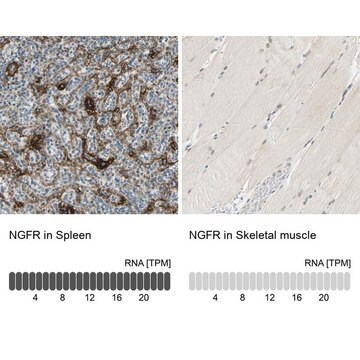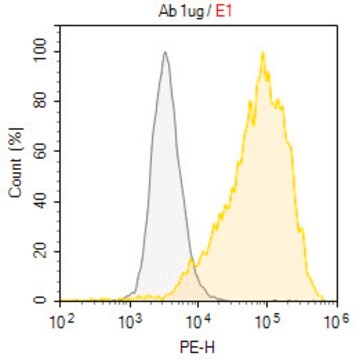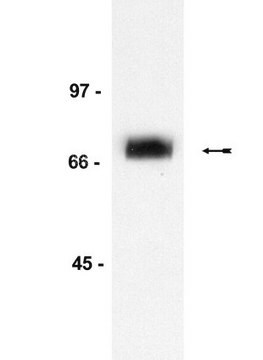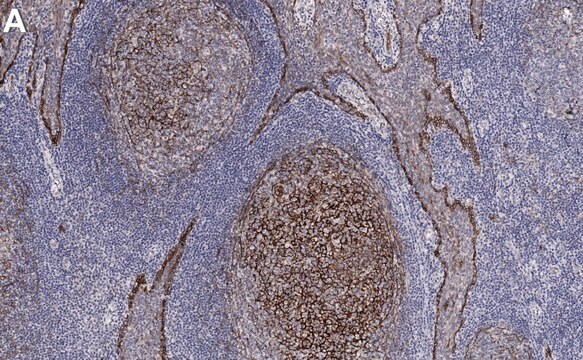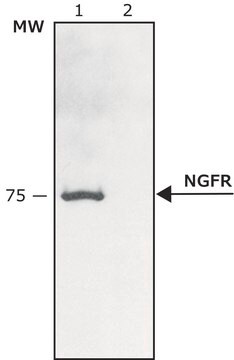N5408
Monoclonal Anti-Nerve Growth Factor Receptor (NGFR p75) antibody produced in mouse
clone ME20.4, ascites fluid
Sinónimos:
Anti-NGFR p75
About This Item
Productos recomendados
biological source
mouse
conjugate
unconjugated
antibody form
ascites fluid
antibody product type
primary antibodies
clone
ME20.4, monoclonal
mol wt
antigen 75 kDa
contains
15 mM sodium azide
species reactivity
racoon, monkey, pig, human, feline
should not react with
mouse, chicken, rat
technique(s)
flow cytometry: suitable
immunohistochemistry (formalin-fixed, paraffin-embedded sections): 1:1,000 using human tongue
immunohistochemistry (frozen sections): suitable
immunoprecipitation (IP): suitable
indirect ELISA: suitable
microarray: suitable
neutralization: suitable
radioimmunoassay: suitable
western blot: suitable
isotype
IgG1
UniProt accession no.
shipped in
dry ice
storage temp.
−20°C
target post-translational modification
unmodified
Gene Information
human ... NGFR(4804)
General description
Specificity
Immunogen
Application
- for enzyme linked immune sorbent assay (ELISA)
- immunoprecipitation, immunoblotting and immunohistochemistry
- for immunocytochemistry (acetone- or formalin-fixed, Bouin′s solution - or formalin- fixed paraffin-embedded)
- for electron- microscopy radioimmunoassay (RIA) (Kd of 7x10-10 M)
- flow cytometry
- for the inhibition of binding of NGF to the receptor
- for rossette assay
- as a cholinergic immunotoxin
Biochem/physiol Actions
Physical form
Storage and Stability
Disclaimer
¿No encuentra el producto adecuado?
Pruebe nuestro Herramienta de selección de productos.
Related product
Storage Class
10 - Combustible liquids
wgk_germany
nwg
flash_point_f
Not applicable
flash_point_c
Not applicable
Elija entre una de las versiones más recientes:
¿Ya tiene este producto?
Encuentre la documentación para los productos que ha comprado recientemente en la Biblioteca de documentos.
Nuestro equipo de científicos tiene experiencia en todas las áreas de investigación: Ciencias de la vida, Ciencia de los materiales, Síntesis química, Cromatografía, Analítica y muchas otras.
Póngase en contacto con el Servicio técnico
